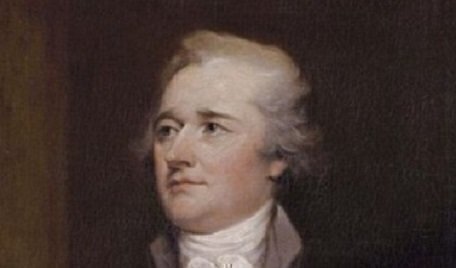For a brief moment in 1795, George Washington’s attorney general floated an idea that didn’t have a chance of success but surely would have been interesting: Alexander Hamilton as a Supreme Court Justice.
 In late June 1795, President Washington had to fill a job opening for Chief Justice of the United States. Washington had been able to convince some of the new nation’s best legal minds to sit on the bench when it met for two sittings a year in New York, then Philadelphia. James Wilson, James Iredell, William Patterson, and John Jay were among the early Justices.
In late June 1795, President Washington had to fill a job opening for Chief Justice of the United States. Washington had been able to convince some of the new nation’s best legal minds to sit on the bench when it met for two sittings a year in New York, then Philadelphia. James Wilson, James Iredell, William Patterson, and John Jay were among the early Justices.
But Washington also had problems retaining other Justices. They had to ride the circuit and visit courts outside of the temporary capital of Philadelphia for several months at a time. The pay wasn’t particularly good, either.
Chief Justice Jay resigned from the Court in June 1795 after he returned from Great Britain after negotiating a treaty that attempted to settle trade and territorial issues between the former combatants. Washington and his staff expected the resignation since Jay had been elected as governor of New York in May.
In a 2006 University of Pennsylvania Law Review article, Natalie Wexler recounted the dilemma faced by Washington and his aides. Attorney General William Bradford wrote about the public doubts concerning Justice William Cushing (age and health issues) and Justice James Wilson (financial problems) as replacements for Jay. Bradford also worried that the choice of replacing Jay could be “an embarrassing business.”
On June 30, 1795, President Washington received a letter from former Supreme Court Justice John Rutledge asking to be reappointed to the Court as Chief Justice. Rutledge had left the Court after five months because he was passed over for Jay as Chief Justice. Washington immediately replied, offering Rutledge the position.
But just after Washington made his offer to Rutledge, Bradford had written to Hamilton and asked, in a roundabout way, if he would consider joining the Supreme Court.
“Our squabbles in New York have taken our Chief Justice from us—ought you not to find us another? I am afraid that department ‘as it relates neither to War, finance nor Negotiation,’ has no charms for you: and yet when one considers how immensely important it is, where they have the power of paralyzing the measures of the government by declaring a law unconstitutional, it is not to be trusted to men who are to be scared by popular clamor or warped by feeble-minded prejudices,” Bradford said. “I wish to heaven you would permit me to name you: If not, what think you of Mr. [Edmund] Randolph?”
Neither Hamilton nor Randolph, the current Secretary of State, would be confirmed by the Senate as Jay’s replacement. Although President Washington named Rutledge as the Chief Justice as a recess appointment, Rutledge publicly criticized the Jay Treaty while in South Carolina using controversial language – a treaty supported by a Federalist-controlled Senate. In December 1795, the Senate rejected Rutledge’s nomination as Chief Justice.
In the following months, Cushing declined a promotion to Chief Justice and Patrick Henry didn’t respond to Washington’s requests to consider the job. But Washington’s next choice was Oliver Ellsworth, who was the force behind the Judiciary Act of 1789 that formed the first federal court system. The Senate considered and approved Ellsworth’s nomination as Chief Justice within two days with one dissenting vote.
In his earlier writings, there were indications that Hamilton certainly valued the federal judiciary and the Court as vital to the concept of separation of powers. In Federalist 78, Hamilton remarked that the courts should be “justly regarded as an indispensable ingredient in its constitution, and, in a great measure, as the citadel of the public justice and the public security.”







